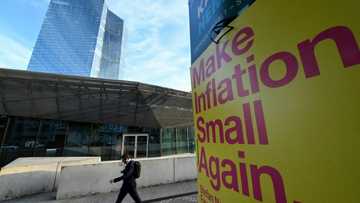Key US inflation measure ticks up in August

Source: AFP
The key US inflation measure used by the Federal Reserve to set interest rates ticked up again in August, fueled by rising energy prices, according to government data published Friday.
But aside from volatile food and energy costs, which are still paining Americans at grocery stores and gas pumps, inflation actually slowed last month to reach its lowest annual rate since 2021.
This is a welcome development for policymakers hoping to slow price increases without crashing the economy.
The Fed has raised interest rates 11 times since March 2022 in a bid to tame inflation and bring it firmly down to its long-term target of two percent.
Although inflation has come down sharply in the last 12 months, it remains stuck stubbornly above the Fed's target, even increasing slightly over the summer, which has kept up the pressure on the central bank.
The annual personal consumption expenditures (PCE) price index rose 3.5 percent in August, up 0.1 percentage point from last month, the Commerce Department announced in a statement.
PAY ATTENTION: Follow us on Instagram - get the most important news directly in your favourite app!
Month-over-month, PCE inflation increased by 0.4 percent, in line with the median expectation of economists surveyed by Briefing.com.
The move was fueled by an increase in energy prices, which climbed 6.1 percent from July, while food prices also rose slightly.
However, once volatile food and energy prices are stripped from the inflation figures, the picture looks far brighter.
So-called core inflation slowed to an annual rate of 3.9 percent in August, down sharply from recent months -- its lowest level for almost two years.
Policymakers received more positive news Friday as the Commerce Department data showed US citizens' personal incomes grew by 0.4 percent.
"Overall, spending remains positive and inflation is slowing, which will be welcome news to policymakers," High Frequency Economics Chief US Economist Rubeela Farooqi wrote in a note to clients.
She added that slower income growth and more easing of price pressures should keep the Fed's rate-setting committee "on the sidelines for the rest of 2023."
The Fed has said it will take a data-dependent approach to future interest rates.
Its rate-setting committee held interest rates steady in September but warned it expected another hike would be needed before the end of the year to tame inflation.
Slowing core inflation is likely to be seen as a positive development among policymakers, since it indicates that prices are still heading in the right direction despite the recent rise in energy costs.
If data continues to indicate slowing core inflation and a strong job market, the Fed may be minded to pause again at its next rate decision.
Futures traders currently assign a probability of more than 85 percent that the Fed will hold rates steady at that decision on November 1, according to data from CME Group.
Source: AFP




